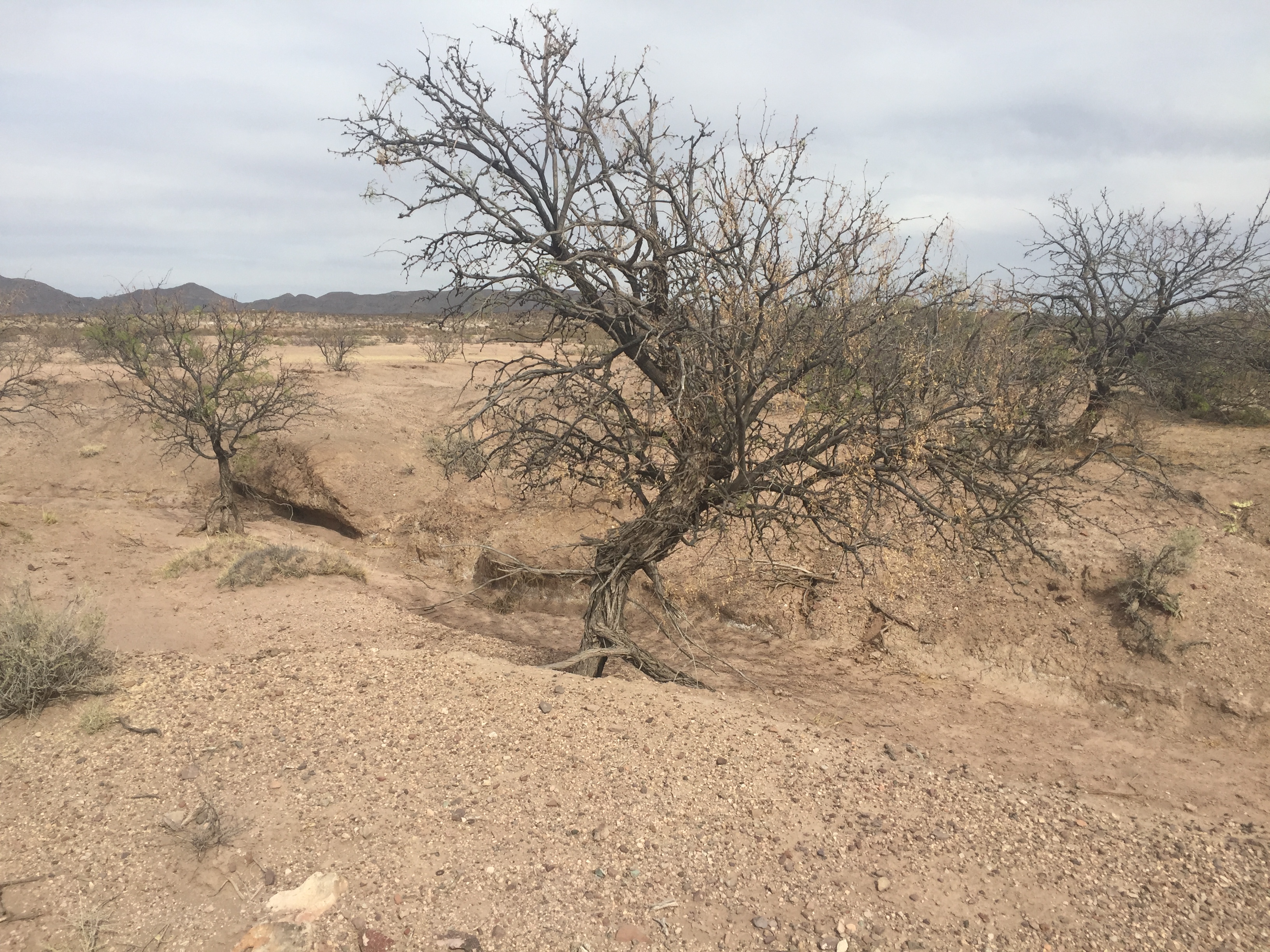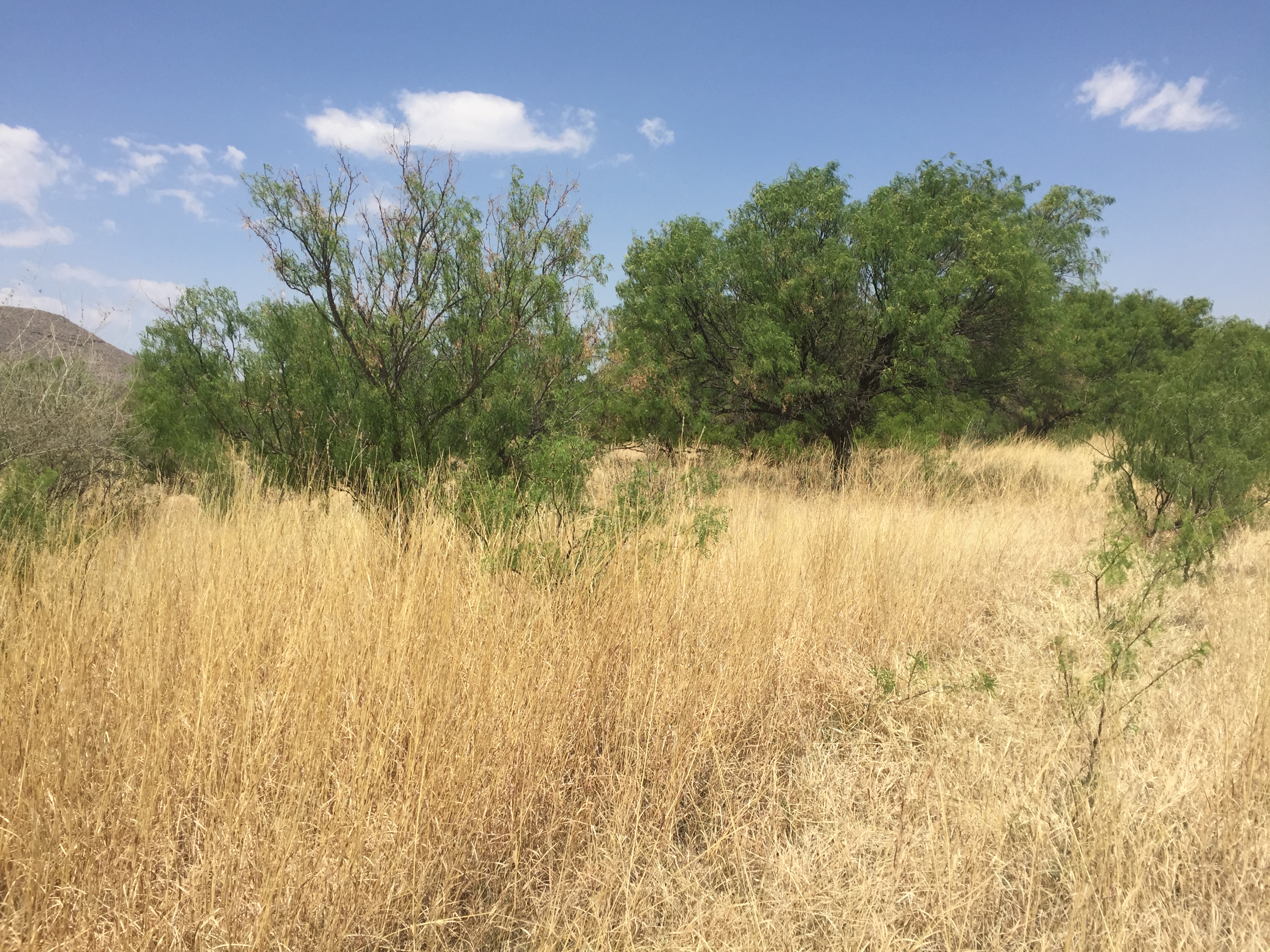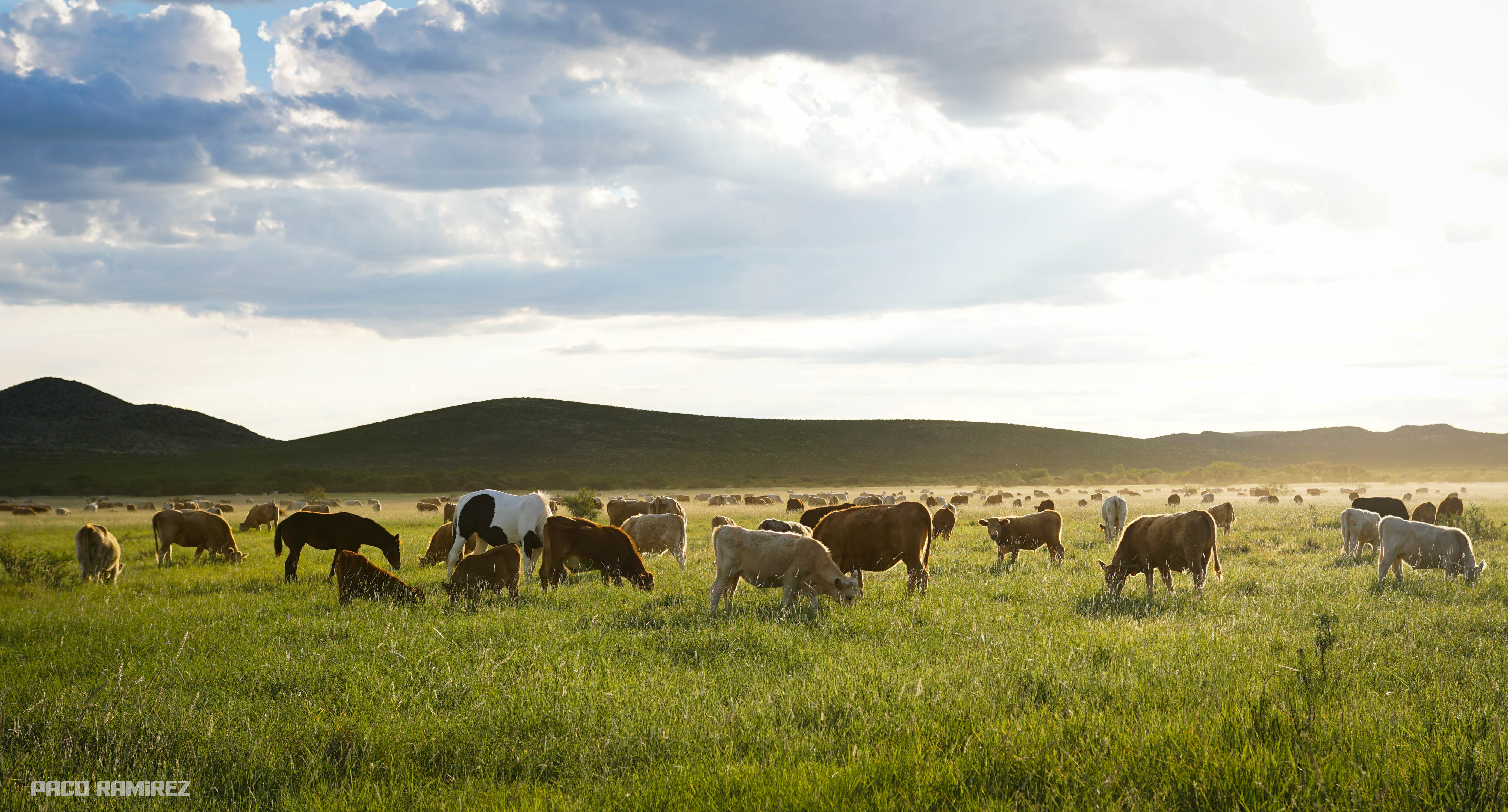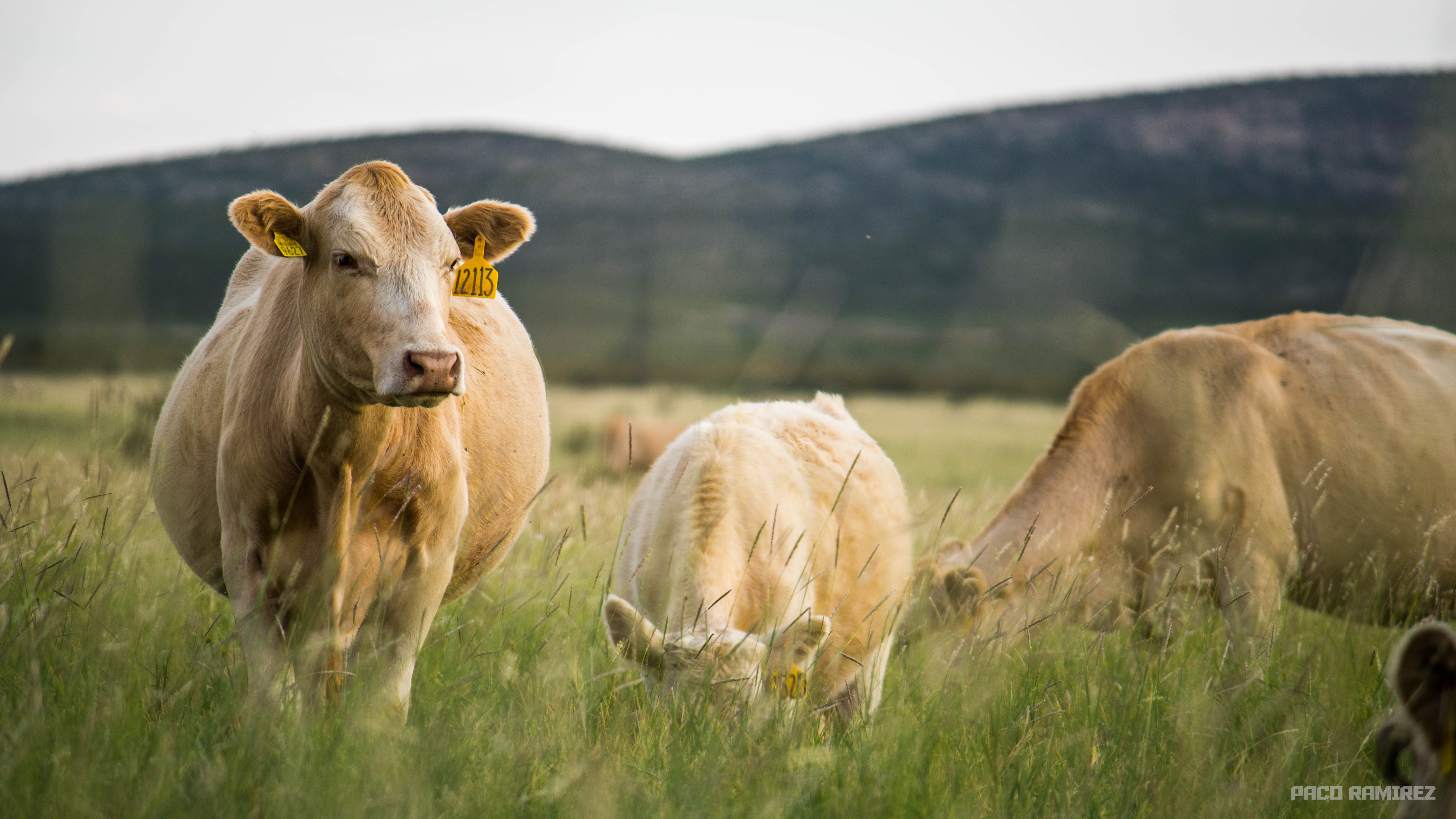Preserving a family legacy by regreening the Chihuahuan Desert
Friday, 28 February, 2025

For Alejandro Carrillo, ranching is more than a profession - it’s a family legacy and a lifelong passion. Raised on stories of his great-grandfather’s early days in the desert and spending summers riding alongside his father, Alejandro developed a deep connection to the land. But when he took over Las Damas Ranch in Chihuahua, Mexico, he didn’t just inherit a business - he took on the responsibility of restoring a fragile ecosystem and ensuring a sustainable future for generations to come.
Today, Alejandro is not only regenerating the Chihuahuan Desert but also sharing his knowledge to help ranchers worldwide rethink the way they work with the land. As a world leader in Holistic Planned Grazing Management, he has transformed 30,000 acres of desertified land into thriving grasslands at Las Damas Ranch.
In a region where annual rainfall rarely exceeds 9 inches (250mm), every drop matters. Persistent drought and extreme conditions pushed Alejandro to seek better ways of ranching - methods that could restore soil health, retain moisture, and ensure long-term productivity. Through holistic management, he’s proving that cattle and conservation can go hand in hand.
A Family Legacy
Alejandro’s connection to the land started early. His father introduced him to the desert as a toddler, taking him on hunting trips to track mule deer through the rugged terrain. Summers were spent on cattle ranches, where he helped with roundups, rode the range, and saw firsthand the struggles of ranching in arid conditions.
His family has a long history in ranching. His great-grandfather was among the first to work cattle in the region, followed by his grandfather. His father, a banker, purchased Las Damas Ranch 50 years ago after the family lost their original land.
Although Alejandro spent summers at the ranch, he pursued a career in software engineering, earning a Master’s in Technical Management from Johns Hopkins University and working in Mexico and the US. But when his father turned 70, he asked Alejandro to return and help run Las Damas.
Taking over, Alejandro faced a harsh reality of barren, degraded, and lifeless land. Determined to turn things around, Alejandro took Holistic Management training in 2006, learning from mentors Jesús Almeida, Elco Blanco, and Octavio Bermudez. He and a group of forward-thinking ranchers travelled the world, learning from the best.

Alejandro’s return to the ranch became about more than restoring the land - it was about revitalising his family’s legacy. During a visit, Jesús Almeida, said to him: “This isn’t just about growing more grass or having more cattle - it’s about giving more years of life to your father.”
Alejandro’s father, now 92, remains deeply connected the ranch. “I truly believe it’s the one thing that keeps him alive,” says Alejandro.
Regreening the Desert
When Alejandro took over, native perennial tall grasses were non-existent. The land was dry, unable to hold moisture, and exposed to extreme conditions. Restoring plant diversity seemed impossible, especially with no irrigation and less than 9 inches/250mm of rainfall per year.
By managing for what he wanted, instead of fighting what he didn’t, Alejandro naturally controlled and eradicated invasive woody and poisonous plants. Instead of relying on spraying, fire, or mechanical removal, he tackled the root cause - lifeless soil.
Holistic Planned Grazing Management is at the heart of Alejandro’s approach. By working with nature instead of against it, he mimics the natural migration of bison and antelope, using controlled grazing to improve the land. His method allows livestock to graze in one area for a short time before moving on, giving plants time to recover and grow stronger. This cycle, combined with the natural role of insects, birds, and other wildlife, helps restore balance to the ecosystem.
As a result, the land becomes more resilient. Soil health improves, water soaks in more effectively, and native grasses return, creating a thriving habitat for a wide range of species. This approach also regulates soil temperature, extends the growing season, and reduces the risk of dust storms and wildfires.
Since implementing these practices, Alejandro has seen remarkable changes. The once-barren land now holds more moisture, supports diverse plant life, and has dramatically increased its grass species - all without irrigation or artificial seeding.

Over the past decade, Alejandro has seen an explosion in plant diversity, increasing the number of grass species on the ranch from just 20 to 80. This resurgence has created a more resilient ecosystem, better able to support livestock and wildlife.
“Nature is always trying to cover the soil with a plant to keep life going,” Alejandro explains. “When grasslands degrade, nature responds by growing thorny and poisonous plants as her last line of defence.”
By restoring perennial grasses, forbs, and trees, he has seen a 10-20% increase in annual rainfall compared to the regional average. And while drought remains a constant challenge, Alejandro embraces it as part of the process.
“For me, every dry spell is an opportunity to improve, adapt, and push the boundaries of what’s possible.”
Managing Cattle for Maximum Impact
Alejandro currently runs 500 head of cattle at Las Damas Ranch with two staff. A key part of his success is frequent herd movement, which allows for optimal grazing and plant recovery.
“We move cattle at least once a day, sometimes twice, depending on conditions,” he explains.

This high-density, short-duration grazing reduces overgrazing, promotes soil regeneration, and minimises the need for expensive feed supplements, which helps reduce costs. By ensuring his pastures remain productive year-round, Alejandro has significantly cut down on the largest expenses in ranching: feed, fuel, and labour.
“Most ranchers struggle because of high input costs - hay, protein blocks, fuel. By improving the nutrition available through managed adaptive grazing, I’ve reduced all three,” he says.
Instead of relying on external feed inputs, Alejandro prioritises genetics and nutrition to create a resilient herd that thrives on natural forage.
“My goal isn’t to simply increase stocking rates - it’s to make sure we’re running a profitable operation. There is no point having more cattle if you're still losing money,” he says. “And remember, my dad was a banker. When I joined the ranch, he told me, ‘You need to tell me every month where the money’s going.”
The size of each paddock varies based on rainfall and pasture conditions. During the non-growing season, larger paddocks ensure animals have enough forage without damaging the land. In the rainy season, smaller paddocks create higher impact grazing, improving soil health and plant diversity while ensuring profitability.
By mimicking natural herd behaviour through controlled movement, Alejandro has built a low-input, high-efficiency system where his cattle regenerate the land rather than degrade it.
The Role of Electric Fencing and Technology
One of Alejandro’s most valuable tools has been electric fencing, which he considers essential to his success.
“If you really want to regenerate the land, you need control over your cattle. A reliable and robust electric fencing system makes that possible.”
Gallagher’s portable and solar-powered electric fencing solution allows Alejandro to move cattle efficiently, mimicking their natural behaviour, which is key to plant recovery and soil regeneration.
“We use a combination of permanent high-tensile fencing and temporary poly wire fencing. The permanent fencing structures the ranch into rotational grazing zones. The temporary fencing allows us to move cattle daily and adjust paddock sizes based on rainfall and pasture conditions. To me, electric fencing is as important as water on our ranch.”

Alejandro also incorporates alleyways to water sources, ensuring cattle always have access to clean water while minimising damage to pastures.
Another critical technology on Las Damas Ranch is Satellite Water Monitoring, which has revolutionised how Alejandro manages this precious resource. In the past, creeks in the region ran for seven to eight months during the rainy season, but over time, these natural water sources have disappeared due to land degradation and shifting rainfall patterns. With no reliable surface water, Alejandro relies entirely on wells to supply water to his cattle.
To improve efficiency and keep fuel costs down, he has transitioned all his wells to solar power, reducing reliance on diesel and making his water system more sustainable. Managing these wells used to be time-consuming, requiring long drives across the ranch for manual checks. Gallagher’s Satellite Water Monitoring system has changed everything.
“We rely on it so much that we don’t even go and look at the water storage anymore.”
By tracking water levels remotely, Alejandro has cut time, fuel, and labour costs, ensuring that water is always available when needed.
“I used to spend hours driving out to check water levels,” he says. “Now, I can check them from my phone. If a tank is leaking or the water level drops too fast, I get an alert.”
Driving Change
Today, Las Damas Ranch is an example of how taking a holistic approach to ranch management can restore ecosystems and improve profitability.
Alejandro has delivered TED Talks, spoken at global conferences, and been featured in documentaries like Common Ground, highlighting his far-reaching influence. His consulting spans North America, South America, the UAE, and Australia. He is driven by his mission to reverse desertification worldwide, while helping other ranchers reduce costs, improve grazing strategies, and move away from high-input, low-margin operations.
Alejandro believes the future of ranching lies in adaptive management, community collaboration, and emerging technologies. He sees neighbouring ranches as essential partners in land regeneration and long-term sustainability.
“For ranchers to succeed, we need each other. A healthy ecosystem doesn’t stop at the boundary line. We need more people regenerating land, more people applying these principles, and more people working together,” he says.
“The art of grazing is balancing the cattle well-being with the needs of the land. When we do it right, we build a future - not just for ourselves, but for the ranchers who come after us.”